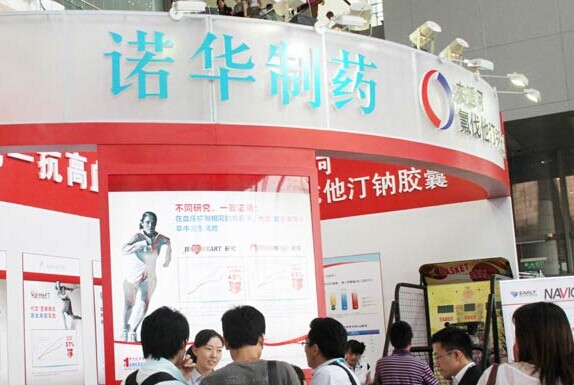

The booth of Novartis Group (China) at an international medical conference in Beijing. The European Union Industrial Research and Development Investment Scoreboard 2013 shows that the pharmaceutical and biotech industry is the biggest spender on R&D in Europe. WU CHANGQING/CHINA DAILY
Innovation is a bold pursuit for any organization or government. In striving for something new and something better, there is one self-evident truth: Innovation is all about making the world better for all of us.
As China's economy is being steered toward a growth model in which knowledge and technology are playing a key role, innovation is becoming increasingly important and vigorously promoted. Premier Li Keqiang reaffirmed this position recently, saying China will strive to make innovation a driving force of the country's economic upgrading.
China has made great efforts to increase its innovation capabilities to drive further economic growth by generating new products, markets and jobs, leading to increased productivity and upgraded industries.
Implementing measurable and practical innovation and creativity is not a simple task. This is especially evident in the pharmaceutical industry; it is estimated to take $1 billion to $2 billion and 15 to 20 years to bring a new product to market.
The European Union Industrial Research and Development Investment Scoreboard 2013 shows the pharmaceutical and biotech industry is the biggest spender on R&D in Europe and, globally, five pharma and biotech companies, including Novartis International AG, are among the top 10 R&D investors.
Meaningful innovation takes time and a long-term outlook. New medications and treatments can take many years to pass through the development pipeline.
There are positive signs that China's pharmaceutical industry is making innovative R&D efforts. To support their efforts and elevate the industry's innovation capabilities, we need to build a thriving R&D ecosystem for which a rewarding policy environment is a key element.
China's government has shown a commitment to R&D investment. However, translating the investment into innovation in the form of products or business culture requires additional efforts, including an open and fair regulatory environment.
The rate of technology commercialization in China is 10 percent, while that for Organization of Economic Cooperation and Development countries is 40 percent. China could rethink its innovation framework to ensure its robust investment will lead to improved innovation capabilities and greater transfer of technology to the marketplace.
Three main pillars are crucial for the creation of a robust national framework to support innovation in the healthcare field.
First, upgrade public investment in basic R&D. The ratio of government investment in basic R&D is improving and increased financial support to universities and public research institutes would have a major effect.
Second, build a globally competitive workforce with skills in science and technology to ensure China retains its position as a rich pool of talent resources.
Third, create an internationally aligned regulatory system to support, protect and reward innovation and encourage competitiveness.
These steps can play a significant role in ensuring a significant global role for China's pharmaceutical industry.
Chinese healthcare companies also need to build a corporate culture that says "yes" to bold endeavors when others would say "no." Pushing the boundaries in innovation is embedded in the Novartis DNA.
Worldwide, Novartis has more than 200 projects in clinical development. The company's success rate with new drug candidates is more than twice the industry median.
And sometimes it fails. More often than not, most new drugs and treatments do not make it to the clinical development phase. According to statistics from the InnoThink Center for Research in Biomedical Innovation, for every 10,000 compounds at the beginning of a drug discovery period, only 1,000 will get to the in vivo testing phase, only 10 of those will enter into clinical trials and just one will become registered.
Novartis Chief Executive Officer Joe Jimenez wrote about a failed R&D project for a disease with no existing treatments that ended up being unfruitful. "Taking risks is a big part of innovation," he said. "Taking risks means you might fail, but we shouldn't be afraid of falling short."
Moreover, a more collaborative culture should be encouraged so as to embrace and inspire the full capabilities of China's talent pool.
In China, the supply of talent has been significantly increasing. The pairing of Chinese talent with Western expertise can be spun into a dynamic R&D system that takes a long-term approach to developing medications and treatments for unmet medical needs.
This is an example of how collaborative R&D should be done and can produce great results, and provide the Chinese people with better health and an improved quality of life.
China‘s bio-pharmaceutical output exceeds 2t yuan in 2013
2014-03-25China pharmaceutical industry sees steady growth
2014-02-23Pharmaceutical industry needs shot of innovation
2014-02-11Chinese, European pharmaceutical companies strike $534m deal
2013-10-24Fosun Pharmaceutical acquires Israeli aesthetic device company
2013-05-30Copyright ©1999-2018
Chinanews.com. All rights reserved.
Reproduction in whole or in part without permission is prohibited.